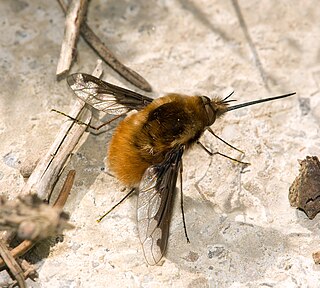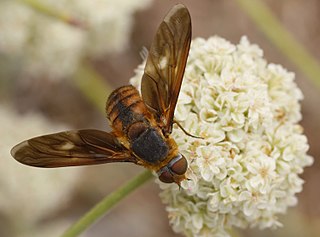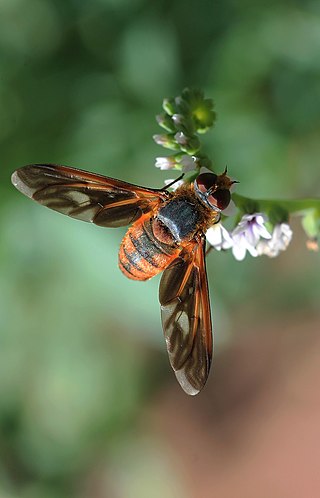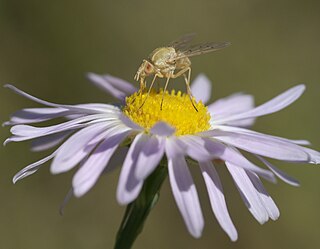
The Bombyliidae are a family of flies, commonly known as bee flies. Some are colloquially known as bomber flies. Adults generally feed on nectar and pollen, some being important pollinators. Larvae are mostly parasitoids of other insects.

Anthracinae is a subfamily of bee flies in the family Bombyliidae. There are more than 80 genera and 2,000 described species in Anthracinae.

Poecilanthrax eremicus is a species of bee fly in the family Bombyliidae.
Systropus arizonicus is a species of bee fly in the family Bombyliidae. It is found in Mexico and Arizona.

Thyridanthrax is a genus of bee flies in the family Bombyliidae. There are about 50 described species in the genus Thyridanthrax, found across Eurasia, Africa, North America, and South America.
Bombylius albicapillus is a species of bee fly in the family Bombyliidae. It occurs in western North America.

Poecilanthrax effrenus is a species of bee fly in the family Bombyliidae.
Poecilognathus punctipennis is a species of bee flies.

Poecilognathus is a genus of bee flies. There are at least 20 described species in Poecilognathus.
Exoprosopa parda is a species of bee fly in the family Bombyliidae.

Villini is a tribe of bee flies in the family Bombyliidae.

Thevenetimyia luctifera is a species of bee fly in the family Bombyliidae. It is found in western North America from Mexico north to British Columbia, Canada, and as far east as Colorado in the United States.

Thevenetimyia speciosa is a species of bee fly in the family Bombyliidae. It is known from Arizona.
Thyridanthrax selene is a species of bee fly in the family Bombyliidae. It is known from the southwestern United States and northwestern Mexico.
Thyridanthrax andrewsi is a species of bee fly in the family Bombyliidae. It is found in the United States in California and Idaho.

Thyridanthrax fenestratoides is a species of bee fly in the family Bombyliidae. It is found in Canada from the Yukon to Ontario, south through most of the United States, and into Mexico. It is similar to the species T. fenestratus from Eurasia.
Thyridanthrax nugator is a species of bee fly in the family Bombyliidae. It is known from California and Oregon.
Thyridanthrax atratus is a species of bee fly in the family Bombyliidae.

Anthrax analis, the black bee fly, is a species of bee fly in the family Bombyliidae. It can be found throughout North America, from the Yukon east to Quebec in Canada, the entire mainland United States, most of Mexico, and as far south as Costa Rica and Cuba. As an adult it is a pollinator, and as a larva it is a parasitoid of tiger beetles in the genus Cicindela, and likely also of solitary bees. It is variable in appearance, with the posterior half of the wings usually transparent, but in the eastern United States the wings may be entirely dark.. The body itself is covered in black hair, but the tip of the abdomen usually has silvery scales.









